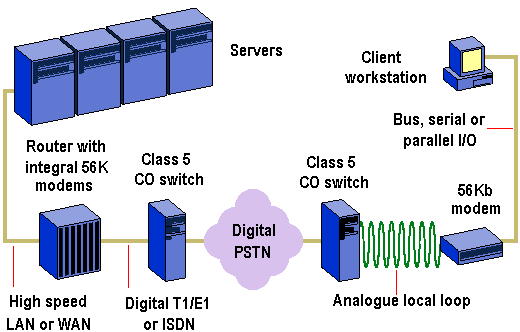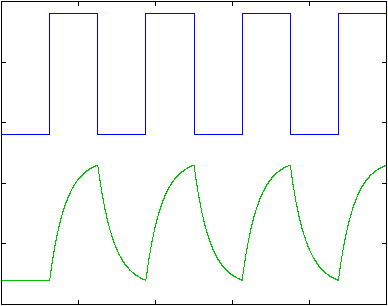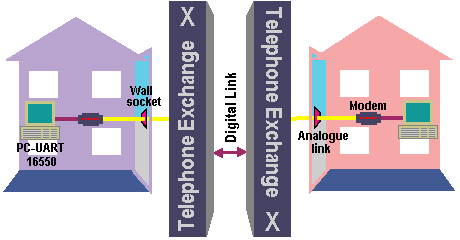Announced in 2000, the ITU's V.92 analogue modem standard has the same download speed as the V.90 standard (56 Kbit/s) but increases the maximum upload speed from 33.6 Kbit/s to 48 Kbit/s. As well as this performance improvement - referred to as PCM … [Read more...]
V90 Technology
The V.90 standard is neither x2 nor K56Flex, although it does use techniques from both. It is actually two standards in one, the specification defining a digital modem and analogue modem pair capable of transmitting data at up to 56 Kbit/s … [Read more...]
56Kbps Modems
1997 saw the arrival of the 56 Kbit/s modem, despite the absence of any international standard for this speed. The K56Flex group of companies, including 3Com, Ascend, Hayes, Motorola, Lucent and Rockwell, used Rockwell chipsets to achieve the faster speed, while companies like US Robotics used its … [Read more...]
Communication Standards
Over the years, modem standards have tended to develop in a rather haphazard way. As well as defining the speed at which a modem may operate they determine how, exactly, a modem compresses data and performs its error … [Read more...]
Voice Modems
Voice modems are part of the current communications convergence trend - the merging of voice, data, fax, and even video - which is affecting all aspects of data communications. Consider the Internet, originally a file transfer system, which is … [Read more...]
Fax Modems
Nearly all modems now include some sort of fax capability and usually come with bundled software which provides a PC with most of the functionality of a fax machine. Digital documents can be converted to analogue, ending up as an image file (if the receiver is another fax/modem), or a printed … [Read more...]
Serial Ports
National Semiconductor has made the UART chips which have driven the PC's serial port ever since the emergence of IBM's first PC. The original PC serial interface used the INS8250-B UART chip. This could receive and transmit data … [Read more...]
Communication Speeds
The actual speed at which a modem can operate is dependent on the particular obstacles it has to overcome. These include: the PC itself, and in particular its serial port the state of the telephone line the kind of modem it is connecting to at the other … [Read more...]
Modulation
Communication channels like telephone lines are usually analogue media. Analogue media is a bandwidth limited channel. In the case of telephone lines the usable bandwidth frequencies is in the range of 300 Hz to 3300 Hz. Data communication … [Read more...]
Modems
A modem allows a PC to connect to other computers and enables it to send and receive files of data over the telephone network. At one end it converts digital data into a series of analogue signals for transmission over … [Read more...]



